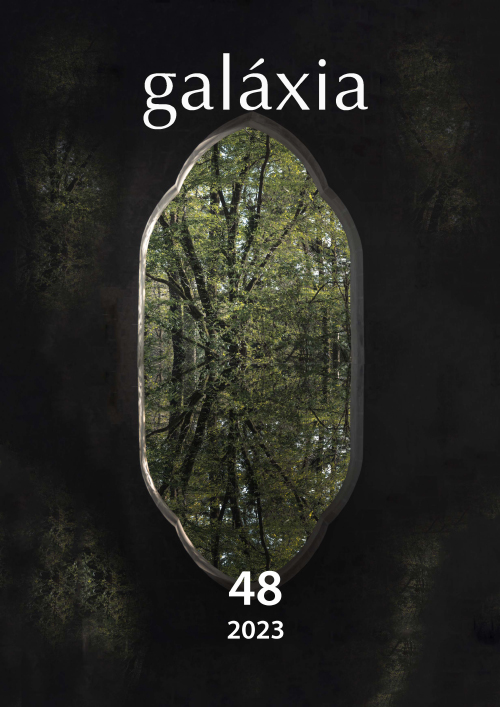O corpo místico do ator experimental no cinema
Palavras-chave:
Cinema experimenta, Ator cinematográfico, Corpo místico, Iconografia cristãResumo
Fora do enquadramento estético e institucional do que se convencionou chamar de arte cinematográfica clássica, houve um pujante grupo de manifestações atorais no cinema — majoritariamente de vertente experimental— cujo programa foi levar para a dimensão performativa de seu métier uma tese que perpassa muito da teoria do ator (no teatro e no cinema): sua santidade, possessão ou misticismo. Este trabalho intenta, então, perfazer uma genealogia de formas atorais no cinema que figuravam essa tese da transcendentalidade do trabalho do ator por meio da iconografia cristã, degradada nesses filmes pelo seu entorno marcado por violência, fome e injustiça. Assim, anticlericalismo e herança das artes visuais servem de base metodológica para acessar essa proposta de genealogia das formas atorais experimentais no cinema em três principais vias temáticas: 1) a revelação; 2) a crucificação e figura crística; 3) a Pietá e a Mater Dolorosa.
Referências
ARTAUD, A. O teatro e seu duplo. Lisboa: Fenda Edições, 1996.
BARTHES, R. O mito do ator possuído. In: ___. Escritos sobre teatro (1a. Ed.). São Paulo: Martins Fontes, 2007. P. 218–222.
______. Image, music, text. Londres: Fontana Press, 1977.
BAZIN, A. O cinema – Ensaios. São Paulo: Brasiliense, 1991.
BERNARDET, J.-C. O vôo dos anjos – Bressane, Sganzerla. Estudos sobre a criação cinematográfica. São Paulo: Brasiliense, 1991.
Bordwell, D.; Staiger, J.; & Thompson, K. The classical Hollywood cinema. Film style & mode of production to 1960. Londres: Routledge, 2005.
BRENEZ, N. Abel Ferrara. Chicago/ Urbana: University of Illinois Press, 2007.
______. De la figura en général e du corps en particulier – L’invention figurative au cinema. Louvain-la-Neuve – Bégica: De Boeck, 1998.
COELHO, T. Antonin Artaud. São Paulo: Brasiliense, 1982.
COSTA, C. O cinema marginal: a imagem-oscilação e a imagem-inação. In: ______. Cinema brasileiro (Anos 60 – 70) – Dissimetria, oscilação e simulação. Rio de Janeiro: 7Letras, 2000. Págs. 84–107.
DAMOUR, C. La déploration, de Bernhardt à Al Pacino. Permanence et migration d’une posture codifiée (arts visuels, théâtre, cinéma). Revue Cinémas, Montreal, vol. 25, n. 01, outono 2014, p. 17–37.
______. Montgomery Clift – Le premier acteur moderne. Strasbourg: ACCRA/ Université de Strasbourg, 2016. (Col. Cahiers Recherche Études Actorales n. 2).
______. De l’iconographie religieuse à l’imagerie universelle: les références à la Pietà dans le cinema hollywoodien. Ligeia, Paris, vol. 02, n. 77-80, 2007, p. 111–119.
(AUTOR (A), 2020).
DELEUZE, G. Cinema 1. A imagem-movimento. São Paulo: Brasiliense, 1985.
DIDI-HUBERMAN, G. Peuples exposés, peuples figurants. L’Oeil de l’Histoire. Paris: Les Éditions de Minuit, 2012. (Collection Paradoxe n. 4).
GARCIN-MARROU, F. La mise en scène de l'état de grâce dans le théâtre de Valère Novarina. Littérature, Paris, n. 176, verão 2014, p. 67-76.
(DOI 10.3917/litt.176.0067) Disponível em: <https://www.cairn.info/revue-litterature-2014-4-page-67.htm#xd_co_f=YTJkNTU2NWMtZjZjYi00Y2JhLWE2YjYtYzU1MjIxY2U3OTg0~>. Acesso em: 30 mai. 2022.
GARDIES, A. L’acteur dans le système textuel du film. Etudes littéraires, Québec, vol. 13, n. 01, 1908, p. 71-108. Disponível em: <http://id.erudit.org/iderudit/500510ar>. Acesso: 14 ago. 2014.
GROTOWSKI, J. Em busca de um teatro pobre. Rio de Janeiro: Civilização Brasileira, 1992.
HORNBY, R. Understanding acting. Journal of Aesthetics and Education, University of Illinois, vol. 17, n. 03, outono 1983, p. 19-36.
LUCET, S. Grotowski, Jerzy. In: AMIEL, Vincent et al. (Dir.) Dictionnaire critique de l’acteur. Rennes: Presses Universitaires de Rennes, 2012. P. 112–115.
MAURIN, F. Performance et punctum. In: FARCY, Gérard-Denis; PRÉDAL, René (Dir.). Brûler les planches, Crever l’écran – La présence de l’acteur. Saint-Jean-de-Védas: L’Entretemps Éditions, 2001. P. 209-225.
Ocupação Rogério Sganzerla. (Catálogo) São Paulo: Itaú Cultural/ Cinemateca Brasileira, 2010.
PESSOA, Fernando. Poesias. (Nota explicativa de João Gaspar Simões e Luiz de Montalvor.) Lisboa: Ática, 1942 (15ª ed. 1995).
ROUBINE, J.-J. A arte do ator. Rio de Janeiro: Jorge Zahar Editor, 2002.
VOGEL, A. Film as a subversive art. Nova York: Random House, 1974.
XAVIER, I. O cinema moderno brasileiro – Cinema novo, cinema marginal. Cinemais: Revista de Cinema e outras questões audiovisuais, Campos dos Goytacazes, n. 4, 1997, p. 39–64.
______. Alegorias do subdesenvolvimento – cinema novo, tropicalismo e cinema marginal. São Paulo: Brasiliense, 1992.
Downloads
Publicado
Como Citar
Edição
Seção
Licença
Copyright (c) 2023 Galáxia. Revista do Programa de Pós-Graduação em Comunicação e Semiótica

Este trabalho está licenciado sob uma licença Creative Commons Attribution 4.0 International License.
Os autores de artigos publicados mantêm os direitos autorais de seus trabalhos, licenciando-os sob a licença Creative Commons CC-BY, que permite que os artigos sejam reutilizados e distribuídos sem restrição, desde que o trabalho original seja corretamente citado. Os autores concedem para GALÁxIA. Revista Interdisciplinar de Comunicação e Cultura o direito de primeira publicação.



 Este obra está licenciada com uma Licença
Este obra está licenciada com uma Licença 